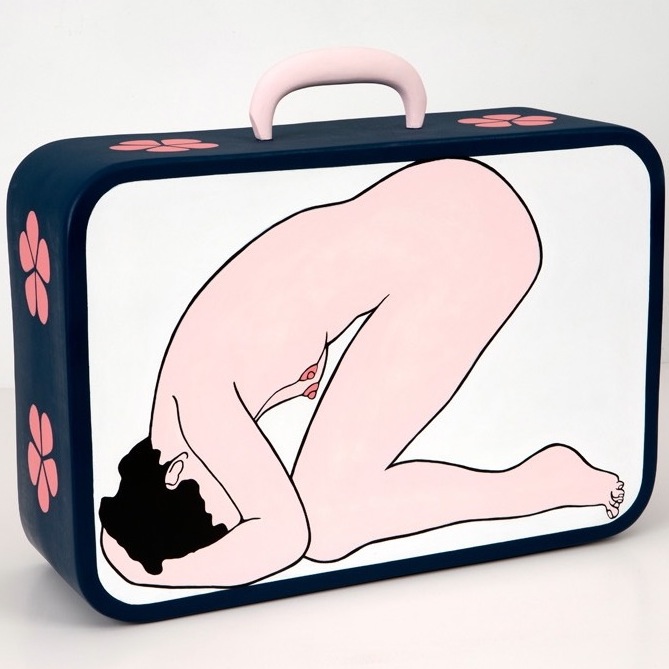Beyer Projects is pleased to announce Islamic, a painted bronze edition by John Wesley. The project, an edition of 6, is based on a 1964 work entitled Islamic that has since been destroyed. Wesley’s paintings, as many scholars have noted, employ styles associated with the Pop and Surrealist movements and yet defy categorization as either. His works are deceptively simple: an economy of line, an insistently flat, often distant execution with an interest in repetition, and a restricted palette are defining features. And yet this apparent simplicity belies the presence of an extraordinary eye for composition, a measured gesture in which no line is extraneous, and a perceptive, curious, and unabashedly erotic mind for which the unknown and the imaginary are powerful provocations.
The nudes in Wesley’s works are drawn from existing media; his method involves tracing those found forms and then grafting them onto the canvas or object and enlarging them exponentially via a mathematical formula.
News
David Rabinowitch at Fredericks & Freiser
David Rabinowitch's new work, Gravitational Vehicle VIII for Kepler and Euclid, we be included in a group exhibition at Fredericks & Freiser gallery, opening tomorrow.
Rabinowitch traces the series back to an early childhood interest in the work of the surrealist painter and sculptor Giorgio de Chirico and the way in which de Chirico, “combined ordinary historical conditions of the world with modern constructivism.” These two concerns — historical conditions and modern constructivism (a concept that the artist broadens to include the work of Cezanne) — inform much of Rabinowitch’s body of work.
The title of the series offers rich insight into some of the central ideas that inform the project. The name makes obvious reference to the natural phenomenon of gravity, although Rabinowitch is careful to clarify that he is neither a philosopher nor a theoretician. His interest is motivated by the intellectual and cultural value of these scientific and mathematical discoveries. Additionally, most works in the series are subtitled with the name of one or two contributors to modern scientific and mathematical discovery. The ascriptions serve as memorials to the human beings whose work contributed greatly to Western cultural development.
While discussing the Gravitational Vehicles series, the artist offered the opinion that “if a work doesn't contain within it an essential element of play, it is no good.” Perhaps one can then consider an encounter with a Gravitational Vehicle as an opportunity for playful exploration, activating creativity and the imagination. By presenting the viewer an opportunity in which a preexisting awareness of Western science is not requisite but simply an additional element for interpretation, Gravitational Vehicle VIII For Kepler & Euclid allows us to contemplate form and content while extrapolating an evolutionary thread's aesthetic and cultural legacy.
The Fredericks & Freiser exhibition will also include Beyer Projects collaborations with Anish Kapoor and Rachel Whiteread.
Richard Tuttle in Design ≠ Art, Cooper-Hewitt National Design Museum
Richard Tuttle's Masculin, produced by Beyer Projects, was included in the groundbreaking 2004 exhibition Design ≠ Art at the Cooper-Hewitt National Design Museum.
"Curated by Barbara Bloemink, Curatorial Director at Cooper-Hewitt, and independent curator Joseph Cunningham, the exhibition is the first by an American museum to feature functional objects by artists such as Donald Judd, Richard Tuttle, Scott Burton, Sol LeWitt, James Turrell and Rachel Whiteread, among others...
Richard Tuttle recently observed that the creation of design objects by artists is “one of the great secrets of the late twentieth century, and long overdue for a museum exhibition.” His design objects, like his art, are syntheses of Minimalism and post-Minimalism. With whimsical originality, Tuttle juxtaposes unusual materials, manipulates proportions and organizes space in new ways. The exhibition will feature a number of Tuttle’s furniture and design objects..." (Source: Cooper-Hewitt National Design Museum)



